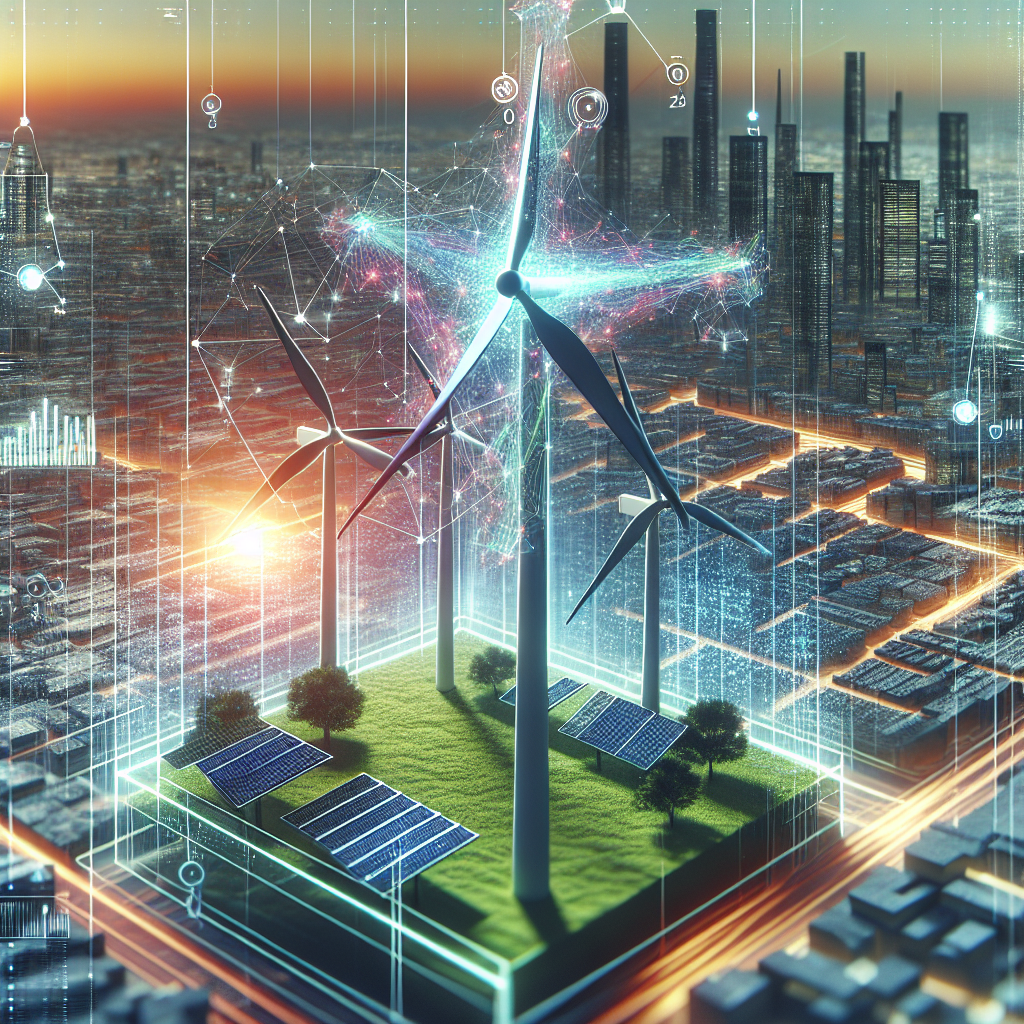The Future of AI-Driven Energy Management Systems for Renewables
Introduction
As the world continues to shift towards renewable energy sources to combat climate change, the need for efficient energy management systems has become increasingly important. AI-driven energy management systems are emerging as a key technology in this space, offering advanced capabilities to optimize the generation, storage, and consumption of renewable energy. In this article, we will explore the future of AI-driven energy management systems for renewables, their benefits, challenges, and potential impact on the energy industry.
Benefits of AI-Driven Energy Management Systems
AI-driven energy management systems have the potential to revolutionize the way we generate, store, and consume energy from renewable sources. Here are some of the key benefits of these systems:
1. Optimization of Energy Generation: AI algorithms can analyze data from various sources, such as weather forecasts, energy demand patterns, and equipment performance, to optimize the generation of renewable energy. This can help maximize the efficiency of solar panels, wind turbines, and other renewable energy sources, leading to increased energy production.
2. Demand Response: AI-driven energy management systems can also enable demand response programs, where energy consumers can adjust their consumption based on real-time pricing or grid conditions. This can help reduce peak demand, lower energy costs, and increase grid stability.
3. Energy Storage Management: With the increasing adoption of energy storage technologies, such as batteries, AI-driven energy management systems can optimize the charging and discharging of these storage systems to maximize their efficiency and lifespan. This can help store excess renewable energy during periods of low demand and release it during peak hours.
4. Predictive Maintenance: AI algorithms can analyze data from sensors and equipment to predict when maintenance is needed, helping to prevent costly downtime and extend the lifespan of renewable energy assets.
Challenges of AI-Driven Energy Management Systems
While AI-driven energy management systems offer many benefits, there are also some challenges that need to be addressed:
1. Data Quality and Availability: AI algorithms rely on high-quality data to make accurate predictions and recommendations. However, data from renewable energy sources can be noisy, incomplete, or unreliable, making it challenging to train AI models effectively.
2. Scalability: As the number of renewable energy assets and data sources increases, AI-driven energy management systems need to be able to scale to handle large amounts of data and complex optimization problems.
3. Interoperability: Energy systems are often composed of diverse technologies, protocols, and standards, making it challenging to integrate AI-driven energy management systems with existing infrastructure.
4. Cybersecurity: AI-driven energy management systems are vulnerable to cyber attacks, which can disrupt energy production, storage, and consumption. Robust cybersecurity measures need to be implemented to protect these systems from potential threats.
Future Trends in AI-Driven Energy Management Systems
Despite these challenges, the future of AI-driven energy management systems for renewables looks promising. Here are some key trends that are shaping the development of these systems:
1. Edge Computing: Edge computing technologies are becoming increasingly important in the energy industry, allowing AI algorithms to run on local devices, such as sensors, controllers, and inverters. This can reduce latency, improve data security, and enable real-time decision-making at the edge of the network.
2. Explainable AI: As AI-driven energy management systems become more complex and autonomous, there is a growing need for transparency and interpretability in AI algorithms. Explainable AI techniques can help users understand how AI models make decisions and provide insights into their behavior.
3. Federated Learning: Federated learning is a decentralized approach to training AI models on data from multiple sources without sharing sensitive information. This can be particularly useful in the energy industry, where data privacy and security are critical concerns.
4. Autonomous Energy Systems: The integration of AI-driven energy management systems with autonomous control technologies, such as blockchain and smart contracts, can enable autonomous energy systems that can operate independently, self-optimize, and adapt to changing grid conditions.
FAQs
Q: How can AI-driven energy management systems help reduce energy costs for consumers?
A: AI-driven energy management systems can optimize energy generation, storage, and consumption to reduce peak demand, lower energy costs, and increase grid efficiency. By analyzing data from various sources, such as weather forecasts, energy demand patterns, and equipment performance, these systems can help consumers save money on their energy bills.
Q: What are some examples of AI-driven energy management systems in action?
A: One example of an AI-driven energy management system is the use of predictive maintenance algorithms to optimize the maintenance schedule of wind turbines. By analyzing data from sensors and equipment, AI algorithms can predict when maintenance is needed, helping to prevent costly downtime and extend the lifespan of wind turbines.
Q: How can AI-driven energy management systems help address grid stability challenges?
A: AI-driven energy management systems can enable demand response programs, where energy consumers can adjust their consumption based on real-time pricing or grid conditions. This can help reduce peak demand, balance supply and demand, and improve grid stability.
Q: What are the key considerations for implementing AI-driven energy management systems?
A: When implementing AI-driven energy management systems, it is important to consider data quality and availability, scalability, interoperability, and cybersecurity. By addressing these challenges, energy companies can unlock the full potential of AI technologies to optimize the generation, storage, and consumption of renewable energy.
Conclusion
AI-driven energy management systems are poised to play a key role in the transition to a more sustainable energy future. By optimizing the generation, storage, and consumption of renewable energy, these systems can help reduce carbon emissions, lower energy costs, and increase grid stability. While there are challenges to overcome, such as data quality, scalability, interoperability, and cybersecurity, the future looks promising for AI-driven energy management systems. As these systems continue to evolve and innovate, we can expect to see a more efficient, resilient, and sustainable energy industry powered by AI technologies.

